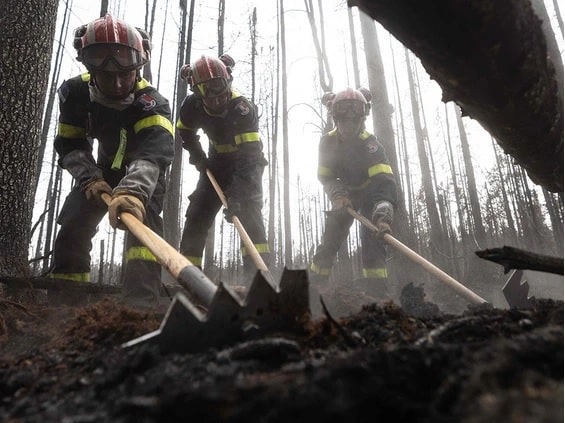Risks due to the impacts of changing climate conditions could play a key role in assessing the value of mining projects in the industry, experts say, as more than a dozen Canadian miners were forced to temporarily suspend their operations in June due to the ongoing wildfires.
Analysts consider several factors ranging from environmental concerns to geopolitical issues alongside the financial feasibility of operating a mine before assessing the value of a project or a company. Risks linked to climate change, however, aren’t usually measured.
“I can see somebody running a portfolio optimization based on climate-change risk and if you have all your sites in the area that’s always going to have wildfires, maybe you will have to think of sites somewhere else outside,” Theo Yameogo, head of Ernst & Young Global Ltd.’s mining section in Canada, said. “But it’s probably going to take time before we see that happen.”
Several miners including Rio Tinto Ltd. and Toronto-based Wesdome Gold Mines Ltd. had to stop their mining activities earlier this month as Canada grappled with one of the worst starts to its wildfire season.
Prime Minister Justin Trudeau attributed the increasing intensity of wildfires to climate change and warned the situation could worsen if steps aren’t taken to reduce Canada’s dependence on fossil fuels.
Climate change is the third-biggest threat to the mining industry behind geopolitics and environmental, social and governance (ESG) concerns, according to a survey conducted by EY last year.
Wesdome, which runs the Kiena gold mine in Quebec, had to shut down for a week and pull its staff out due to the potential risk from the smoke caused by the wildfires. Chief executive Warwick Morley-Jepson said it was the first time he has suspended the mine’s operations in the past five years, but he doesn’t expect it to be the last.
“It’s not only the weather. We do make provisions in our plans because of other interferences as well,” he said. “If climate change is going to start to rear its head as something that happens very frequently, then certainly, we have to build something in those provisions.”
A rise in the intensity of fires would also mean higher costs for the company, Jepson said, since it would have to reconsider how effective the firebreaks around the mine are. A failure in the electric-power supply due to the fire would also lead to additional costs.
He said climate change is influencing the way miners run their business, but the extent of it is something that is hard to predict.
“Do we allocate two-day stoppages per annum to cater for climate change? I don’t know, but it might not be a bad idea going forward,” Jepson said. “At the moment, we have stoppages for various things, so do we include climate change causes as one of those? Maybe in time. It’s certainly a consideration now.”
The impacts from extreme weather would also add another layer of expense to ensure workers’ well-being is monitored, Kent Kaufield, EY’s chief sustainability officer in Canada, said. This would be an additional burden on an industry that’s already finding it hard to attract workers.
Canada’s mining industry is expected to have a shortage of about 80,000 to 120,000 workers by 2030, according to the non-profit Mining Industry Human Resources Council.
[More]



